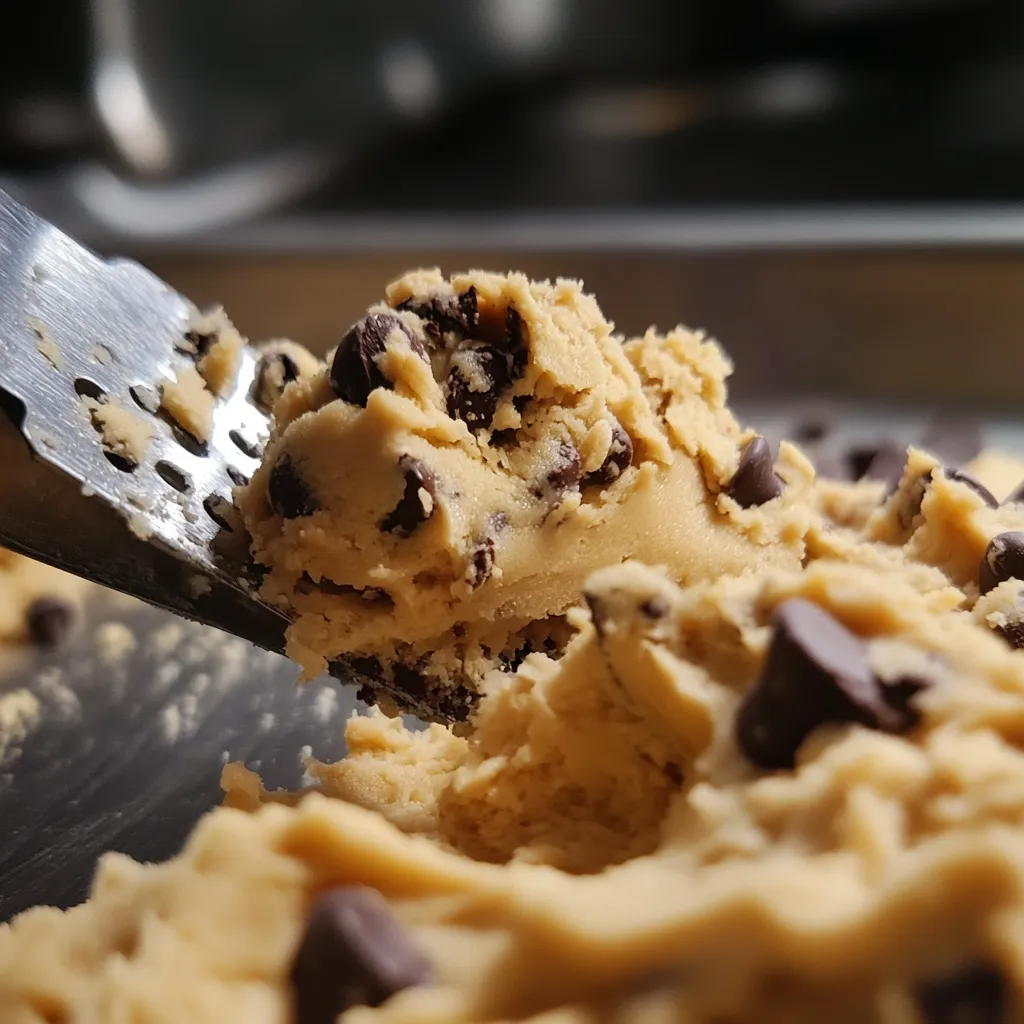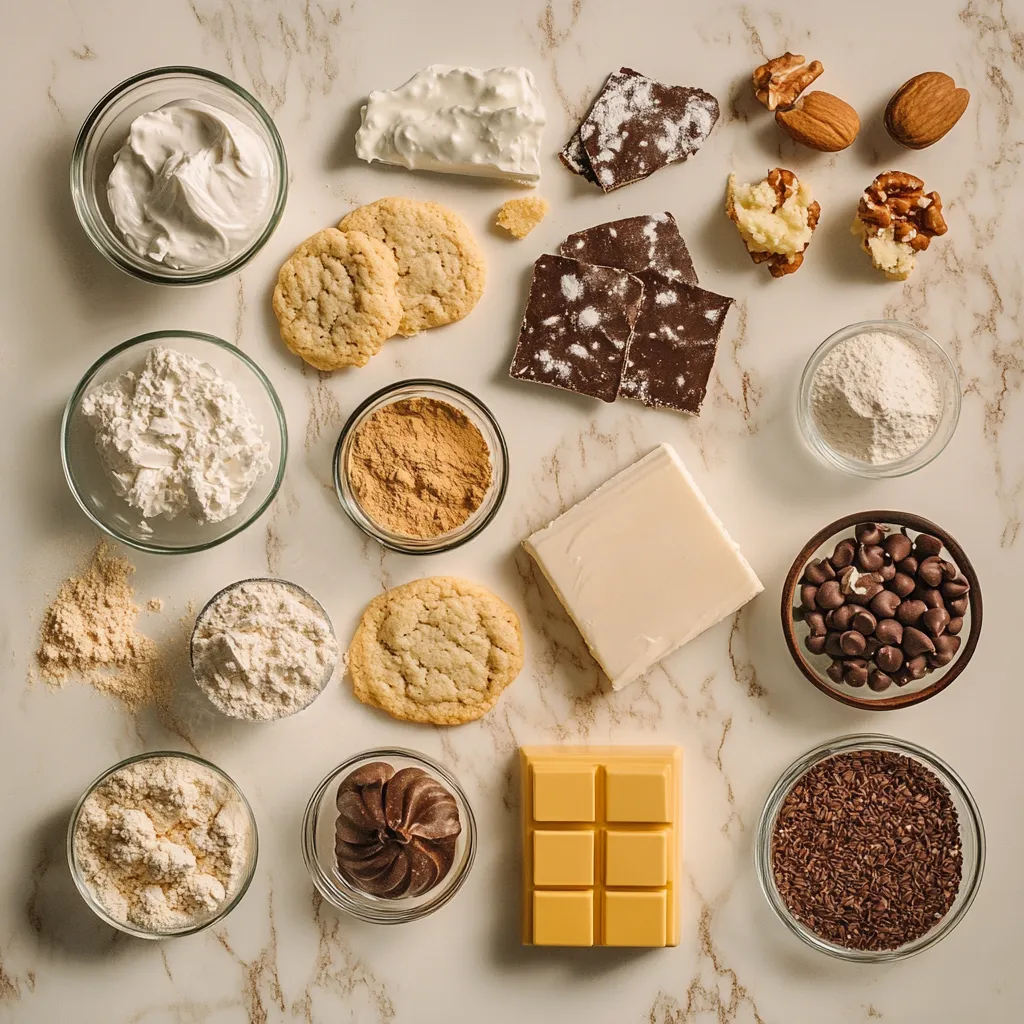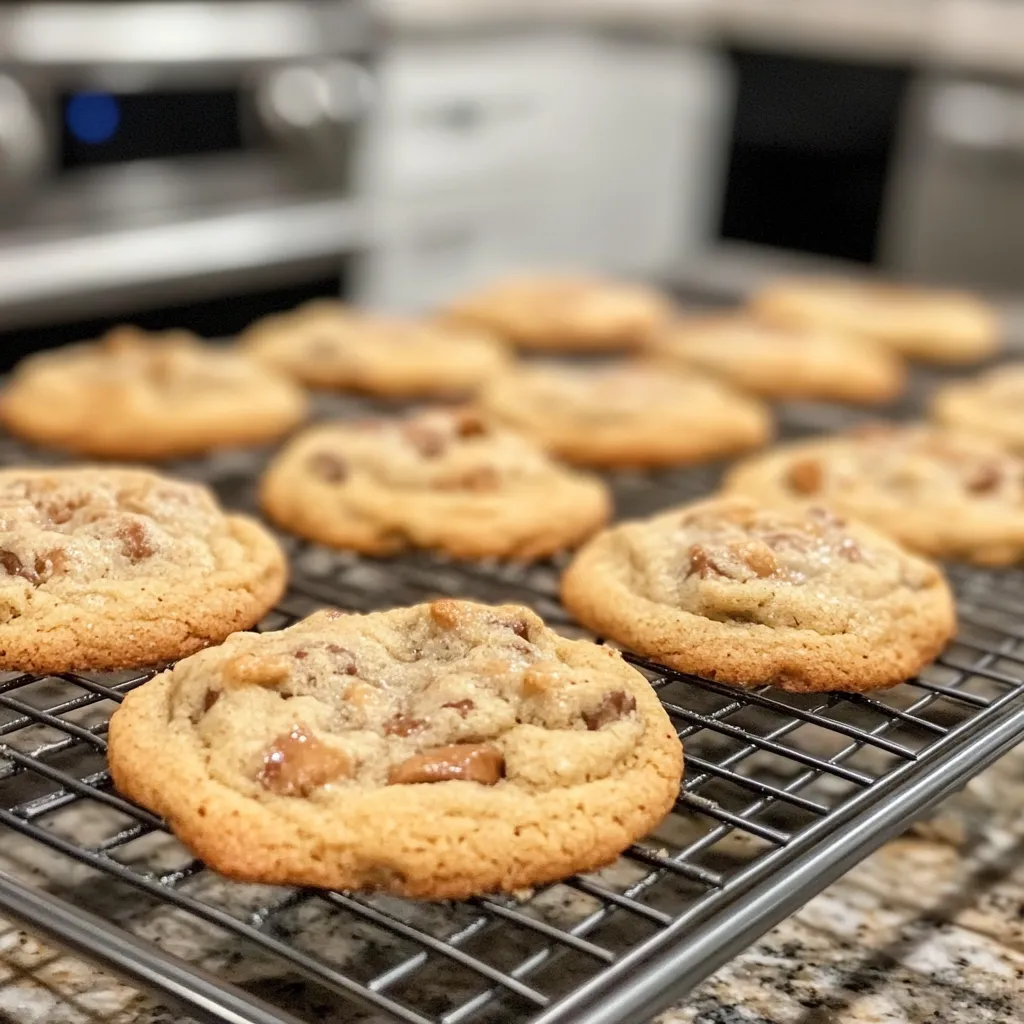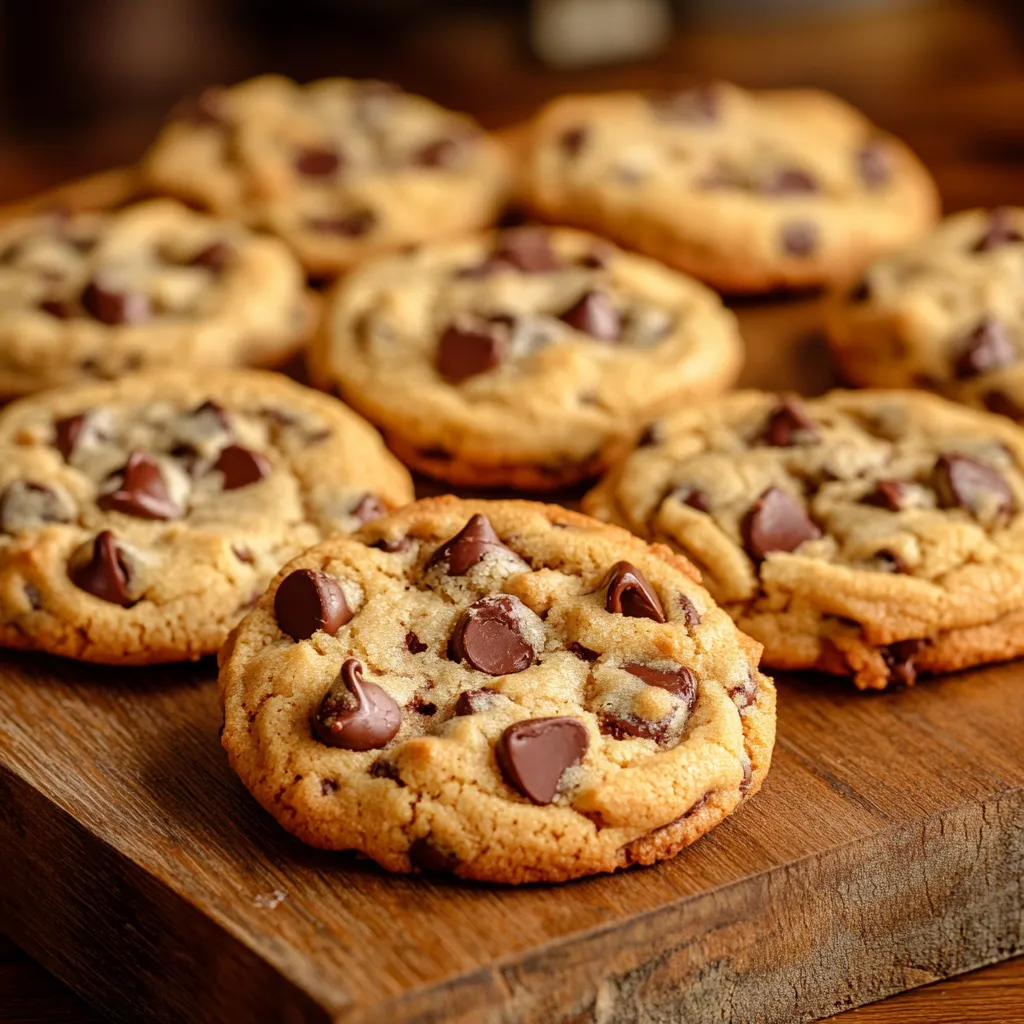If you’ve ever wondered how to make the softest, most irresistible chocolate chip cookies without using butter, this guide is exactly what you need. Swapping out butter for Crisco (vegetable shortening) in cookie recipes might sound unconventional, but it’s a game-changer for texture and shelf-life. In this complete baking guide, we’ll break down why Crisco is a baker’s best-kept secret, how to substitute it properly, what science is behind the transformation, and—of course—we’ll share the ultimate chocolate chip cookies with Crisco recipe.
We’ll also answer the most asked questions like “What does Crisco do in cookies?” and “How does it compare to butter?”
Don’t miss our small batch chocolate chip cookie recipe if you’re baking for two!
Let’s get baking!
Understanding Crisco in Baking
What is Crisco and how is it different from butter?
Crisco is a brand of vegetable shortening made from hydrogenated vegetable oils. Unlike butter, which contains water and dairy solids, Crisco is 100% fat. This composition affects both the flavor and structure of baked goods. While butter imparts a rich taste, Crisco delivers a flakier, airier texture because it doesn’t introduce extra moisture to the dough.
Why bakers choose Crisco for cookies
One of the biggest reasons bakers use Crisco in chocolate chip cookies is because it helps retain moisture, making cookies stay soft longer. Plus, Crisco has a higher melting point than butter, which helps cookies hold their shape and avoid excessive spreading in the oven.
Discover great ideas like eggless chocolate chip cookies for more variation.
Benefits of Using Crisco in Chocolate Chip Cookies
Enhances cookie texture and softness

Using Crisco gives cookies a tender, melt-in-your-mouth quality. Because Crisco is 100% fat with no water content like butter, it reduces gluten formation, which leads to a more delicate crumb. This makes the cookies incredibly soft from the inside with just the right amount of chew.
Also, Crisco doesn’t evaporate moisture as quickly during baking. This keeps the cookies moist and fresh longer—ideal if you’re baking in advance or for gifting.
Makes cookies thicker and more uniform
One of the main visual differences you’ll notice when using Crisco in place of butter is thickness. Cookies made with Crisco spread less. The dough holds its shape better due to Crisco’s higher melting point, resulting in perfectly round, bakery-style cookies every time.
Looking for inspiration? Try our chocolate chip cookie recipe without brown sugar for an interesting take on the classic.
How to Substitute Crisco for Butter in Cookie Recipes
Measuring the right Crisco-to-butter ratio
When substituting Crisco for butter, the general rule is a 1:1 ratio. However, since butter contains about 20% water and Crisco doesn’t, many bakers recommend adding 1 to 2 tablespoons of water or milk per cup of Crisco to replicate the moisture balance in the dough.
Here’s a quick comparison table for common substitutions:
| Butter (cups) | Crisco (cups) | Add Liquid (tbsp) |
|---|---|---|
| 1 cup | 1 cup | 2 tbsp |
| ½ cup | ½ cup | 1 tbsp |
| ¼ cup | ¼ cup | ½ tbsp |
Flavor adjustments when using Crisco
Since butter offers a rich dairy flavor, Crisco-based cookies can sometimes taste more neutral. To balance that, you can:
- Add a teaspoon of butter extract to mimic the flavor
- Use brown sugar to deepen the flavor profile
- Mix in flavorful add-ins like toasted nuts or sea salt flakes
Check out discover the secret to making soft chewy cookies for more pro tips!
The Ultimate Chocolate Chip Cookies with Crisco Recipe
Ingredients you’ll need

To make the best chocolate chip cookies using Crisco, you’ll need simple pantry staples. Here’s your go-to list:
- 1 cup Crisco shortening (not butter flavor)
- 1 cup light brown sugar, packed
- ½ cup granulated sugar
- 2 large eggs
- 1 tablespoon vanilla extract
- 2¼ cups all-purpose flour
- 1 teaspoon baking soda
- ½ teaspoon baking powder
- ½ teaspoon salt
- 1½ cups semi-sweet chocolate chips
- Optional: 1 tablespoon milk or water to mimic butter’s moisture
Step-by-step instructions
- Preheat oven to 375°F (190°C). Line baking sheets with parchment paper.
- In a large bowl, cream together Crisco, brown sugar, and granulated sugar until fluffy.
- Add eggs one at a time, beating well after each. Stir in vanilla.
- In a separate bowl, whisk together flour, baking soda, baking powder, and salt.
- Gradually mix the dry ingredients into the wet mixture. If dough feels too dry, add 1 tbsp of milk.
- Fold in the chocolate chips evenly.
- Scoop dough (about 1.5 tbsp) onto the prepared sheets, spacing about 2 inches apart.
- Bake for 9–11 minutes or until the edges are golden brown but centers look slightly underbaked.
- Let cool on pan for 5 minutes before transferring to a wire rack.
Don’t miss our chocolate chip pecan cookie recipe for a nutty twist on this base.
Common Mistakes to Avoid When Baking with Crisco
Overmixing your cookie dough
When using Crisco, it’s easy to assume the dough needs more mixing due to its firmer texture. But overmixing activates too much gluten, which can make cookies tough instead of soft. Mix just until ingredients are combined.
Pro Tip: Once the flour is added, switch from an electric mixer to a wooden spoon to avoid overworking the dough.
Using cold eggs or ingredients
Crisco doesn’t soften like butter at room temperature, so if your other ingredients are cold—especially eggs or milk—they can make the dough stiff and uneven. Bring all ingredients to room temperature for smooth blending and even baking.
Check out easy chocolate chip cookie recipe no brown sugar if you’re out of brown sugar but still want that soft bite.
Flavor Variations and Add-Ins Using Crisco
Creative mix-ins to try
Crisco-based cookie dough is a blank canvas, which makes it ideal for experimenting. Here are some fun add-ins to elevate your cookies:
- White chocolate chips + macadamia nuts
- Dried cranberries + dark chocolate chunks
- Mini M&Ms for a colorful, kid-friendly version
- Toffee bits + sea salt flakes for a salty-sweet combo
- Chopped pecans or walnuts for extra crunch
Each variation works beautifully thanks to Crisco’s neutral flavor and texture-enhancing properties.
How to balance moisture with different ingredients
Some mix-ins like dried fruit or nuts can absorb moisture from the dough. If you’re adding a lot of these, toss them in a teaspoon of flour before mixing, or add an extra teaspoon of milk or water to keep the cookies soft.
Don’t miss our eggless chocolate chip cookies recipe for a dairy-free twist on this classic.
How to Store and Freeze Crisco Chocolate Chip Cookies
Best practices for storing cookies

Once baked, store your cookies in an airtight container at room temperature. They’ll stay soft for up to 5 days, thanks to Crisco’s ability to lock in moisture. For best results:
- Use parchment paper between layers to prevent sticking
- Toss in a slice of white bread—it helps keep them extra soft
- Keep out of direct sunlight or heat
Freezing the dough vs. freezing baked cookies
Freezing cookie dough is a huge time-saver. Here’s how to do it:
To freeze the dough:
- Scoop dough into balls
- Place them on a baking sheet lined with parchment paper
- Freeze until solid, then transfer to a zip-top freezer bag
- Store for up to 3 months
To bake from frozen: Add 1–2 minutes to the baking time without thawing.
To freeze baked cookies:
- Let cookies cool completely
- Wrap them in plastic wrap or foil
- Place in a freezer-safe container
Thaw cookies at room temperature or warm briefly in a microwave to restore that fresh-baked feel.
Check out discover the secret to making soft chewy cookies to keep your cookies fresh and pillowy!
Troubleshooting Crisco Cookie Issues
Why are my cookies too flat or greasy?
Flat or greasy cookies usually point to too much Crisco or not enough flour. Since Crisco is 100% fat, any excess can lead to spreading and oily texture. Here’s how to fix it:
- Check your measuring technique – scoop Crisco properly, don’t eyeball it
- Chill the dough for 30 minutes before baking
- Add 1–2 tablespoons of flour if the dough looks too soft
Chilling is especially important for Crisco dough, as it firms up the shortening and helps cookies hold their shape.
Why do my Crisco cookies taste bland?
Unlike butter, Crisco doesn’t have much flavor on its own. If your cookies feel bland, try:
- Doubling the vanilla extract
- Adding a pinch more salt
- Using brown sugar for richer taste
- Sprinkling flaky sea salt on top after baking for contrast
And for those days when you’re out of brown sugar, try our easy chocolate chip cookie recipe no brown sugar.
Expert Tips for Perfect Chocolate Chip Cookies with Crisco
Use room temperature ingredients for even mixing
Cookies come out best when all ingredients are the same temperature. Cold eggs or chilled milk can make Crisco hard to blend, leading to uneven texture. Let everything sit out for 20–30 minutes before baking.
Always do a test batch
Baking times and results can vary based on oven accuracy, humidity, and altitude. Bake 1–2 cookies first to test texture, spread, and flavor. Adjust flour or chill time as needed before baking the whole batch.
Invest in the right tools
Perfect cookies are easier with the right gear:
- A cookie scoop ensures even sizing
- Silicone baking mats prevent over-browning
- A cooling rack stops cookies from overcooking on hot pans
Looking for inspiration? Try our small batch chocolate chip cookie recipe when you don’t want leftovers lingering.
Frequently Asked Questions (FAQs)
Can I use Crisco to make chocolate chip cookies?
Yes! Crisco is a great butter substitute. It makes cookies softer, thicker, and helps them stay fresh longer.
Which is better for chocolate chip cookies, butter or Crisco?
It depends on your goal. Butter gives richer flavor, while Crisco provides a soft, chewy texture and more consistent results.
What does Crisco do for cookies?
Crisco creates tender, thick cookies by reducing moisture evaporation and controlling spread in the oven.
What does Crisco do to chocolate?
Crisco helps chocolate melt smoothly, making it shinier and more fluid—perfect for drizzling or dipping.
What happens if you use Crisco instead of butter in cookies?
You’ll get cookies with a cakier texture and more lift. The taste may be milder, so consider adding extra vanilla or a butter extract.
How much Crisco do you put in chocolate chips?
You don’t need Crisco in the chips themselves, but if you’re melting chocolate for a drizzle or dip, add ½ tablespoon of Crisco per ½ cup of chocolate.

